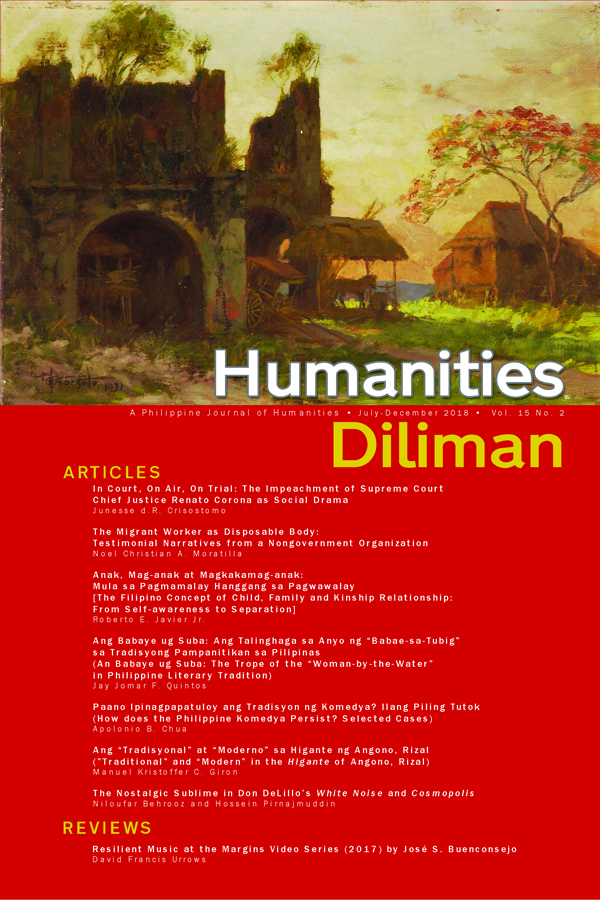Paano Ipinagpapatuloy ang Tradisyon ng Komedya? Ilang Piling Tutok<br> (How does the Philippine Komedya Persist? Selected Cases)
Abstract
This article focuses on the komedya’s staying power in Philippine theater, as elucidated by three cases that show the komedya arts subjected to changes by various theater group agents. The first case critiques a contemporary director’s handling of Orosman at Zafira, Francisco Baltazar’s komedya, and highlights the extensive revisions done on a traditional form by a non-komedya group. The second case centers on the theater group Komedya ng Don Galo and its organizer-impresario, which has transformed komedya from a traditional panata-centered theater practice to an arts educational program centering on value formation for teens. The third case investigates changes in the komedya colonial template, with the playwright at the forefront as change agent, involving Francisco Baltazar‘s commitment to an emerging bayan concept, to Andres Bonifacio relocating European places in komedya texts to the local terrain, and Aurelio Tolentino, who by the turn of the twentieth century was crafting new directions for the komedya theater arts parallel to the national struggle against American imperialism. The study suggests that the genre drama simbolico partly evolved from the komedya tradition. In all three cases, the researcher reflects on the institutional and historical forces that come into play in the survival of the tradition of the komedya.
Keywords: Komedya, tradition/traditional, theatre genre, value formation, threatre structure, culture change


